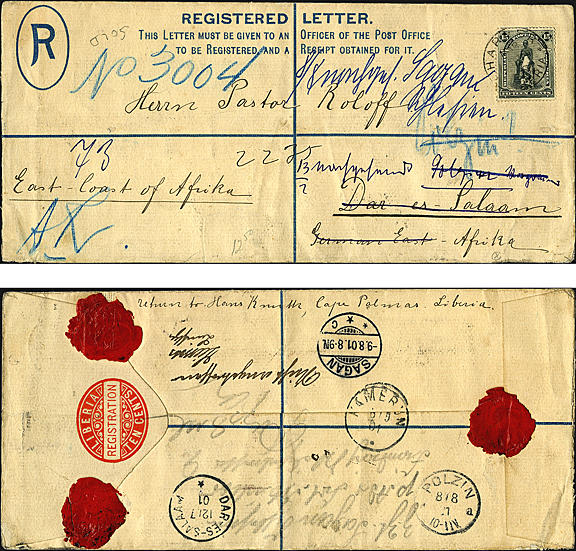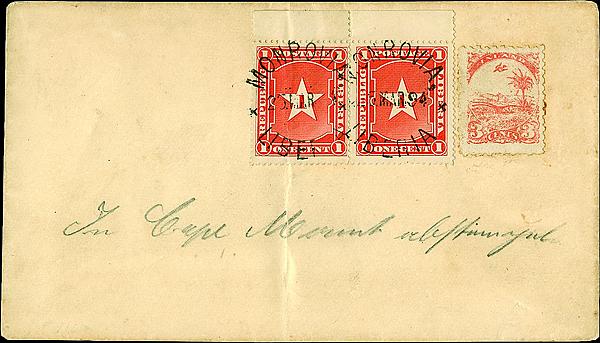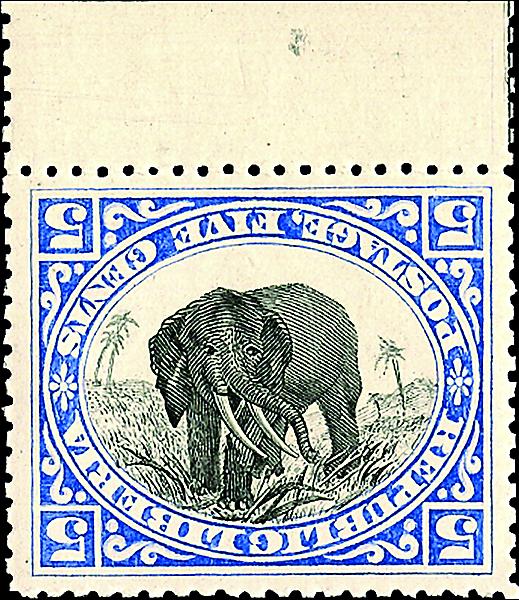World Stamps
Finding guide helps researchers track down Liberia material
The Smithsonian’s National Postal Museum recently published an online finding guide to its extensive collections of Liberian philately.
Liberia was founded in 1822 as a West African colony of the United States. Its initial population consisted of freed American slaves returned to Africa under the sponsorship of the American Colonization Society. Africans liberated from slave ships captured by the U.S. and British navies were also frequently resettled in Liberia.
In 1847, Liberians adopted a constitution modeled after that of the United States, and declared their independence.
The first postage stamps of Liberia were issued in 1860. Commonly referred to as the Liberty Seated issue, they were lithographed in London by Dando, Toddhunter and Smith.
By the early 1890s, Liberia’s postal service recognized that the sale of postage stamps to collectors was an important source of revenue for the economically underdeveloped debtor nation.
Most of the National Postal Museum’s holdings of Liberian philately are not organized as such.
Rather, they are scattered throughout multiple collections transferred by the U.S. Post Office Department and the United States Postal Service, purchased using private funds and donated by individual collectors.
The purpose of this finding guide is to describe the museum’s Liberian material in one document, thereby making it accessible to researchers.
The museum’s largest single holding of Liberian material is the nine-volume collection containing approximately 8,300 items donated in 1980 by Col. Henry Harper Rogers.
Rogers’ interest in Liberian philately stemmed from the fact that his ancestor, U.S. Sen. Robert Goodloe Harper of Maryland, was an early supporter of the American Colonization Society who chose the site and the name for the Liberia colony.
Among the highlights of the Rogers collection is the 5¢ Elephant stamp invert (Scott 62a) from the 1897-1905 pictorial series.
In his 1971 book A Century of Liberian Philately, Rogers stated that this stamp was said to exist but that he had never seen one. Then, in 1974, the discovery sheet of 60 inverts came on the market through Canadian dealer Kasimir Bileski.
Rogers obtained this Position 3 top margin example, shown in Figure 1, for his collection.
There is also an example of the controversial rose red 1881 3¢ Arms stamp (a variety of Scott 21) first reported in 1893.
Different authorities have at various times held these variations of what are normally black 3¢ stamps to be fakes, proofs, genuine color errors, remainders or postal counterfeits.
The 1894 inland cover shown in Figure 2 purports to be from Monrovia to Cape Mount, but the rose red stamp is not tied to the cover nor even canceled at all. The cover also bears two 1¢ vermilion Star stamps.
Rogers also collected outstanding examples of postal stationery.
Among these is an impressive locally printed 10¢ brick red registry envelope used in 1901 from Harper, Liberia, to Dar es Salaam, then twice-forwarded via Polzin and Sagan (now in Poland, but then controlled by Germany) to Cameroon.
Both sides of the envelope are pictured in Figure 3.
The web link to the museum’s Liberia finding guide is http://www.postalmuseum.si.edu/findingguides/Liberia_Finding_Guide.pdf
Daniel Piazza is a Smithsonian curator of philately.
The National Postal Museum is devoted to presenting the colorful and engaging history of the nation’s mail service and showcasing one of the largest and most comprehensive collections of stamps and philatelic material in the world. It is located at 2 Massachusetts Avenue N.E., Washington, D.C., across from Union Station. For more information, visit the museum web site at www.postalmuseum.si.edu.
MORE RELATED ARTICLES
Headlines
-
Postal Updates
Oct 7, 2024, 5 PMUSPS plans to raise postal rates five times in next three years
-
US Stamps
Oct 7, 2024, 3 PMMcMurtrie dismissed as APS education director following Sept. 21 arrest
-
US Stamps
Oct 7, 2024, 12 PMVasiliauskas named president of Mystic Stamp Co.
-
US Stamps
Oct 6, 2024, 5 PMApgar souvenir card available








